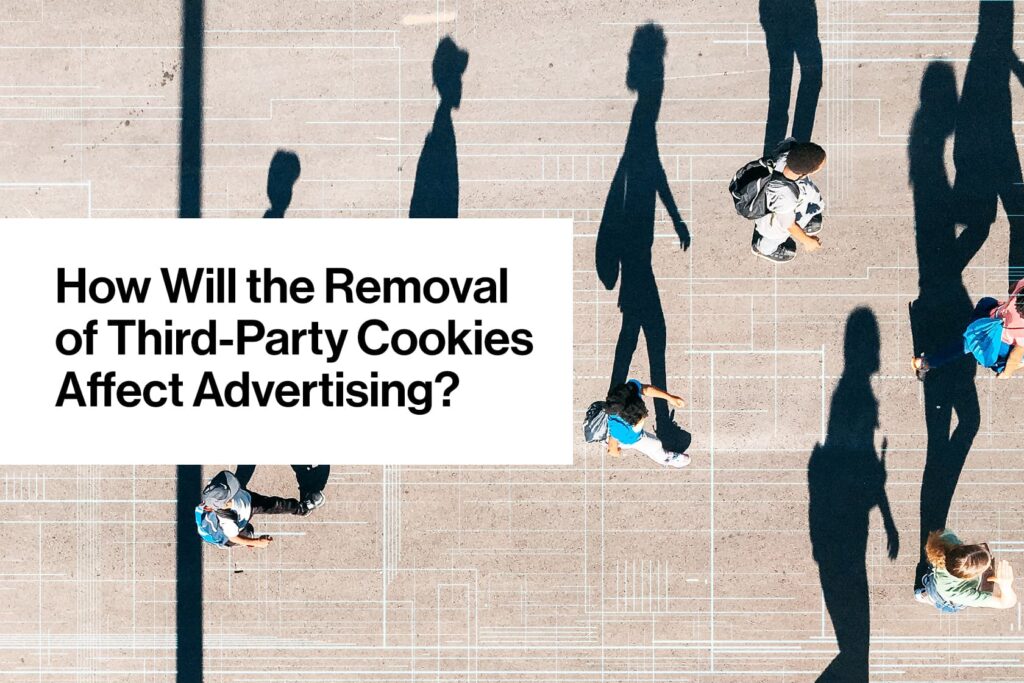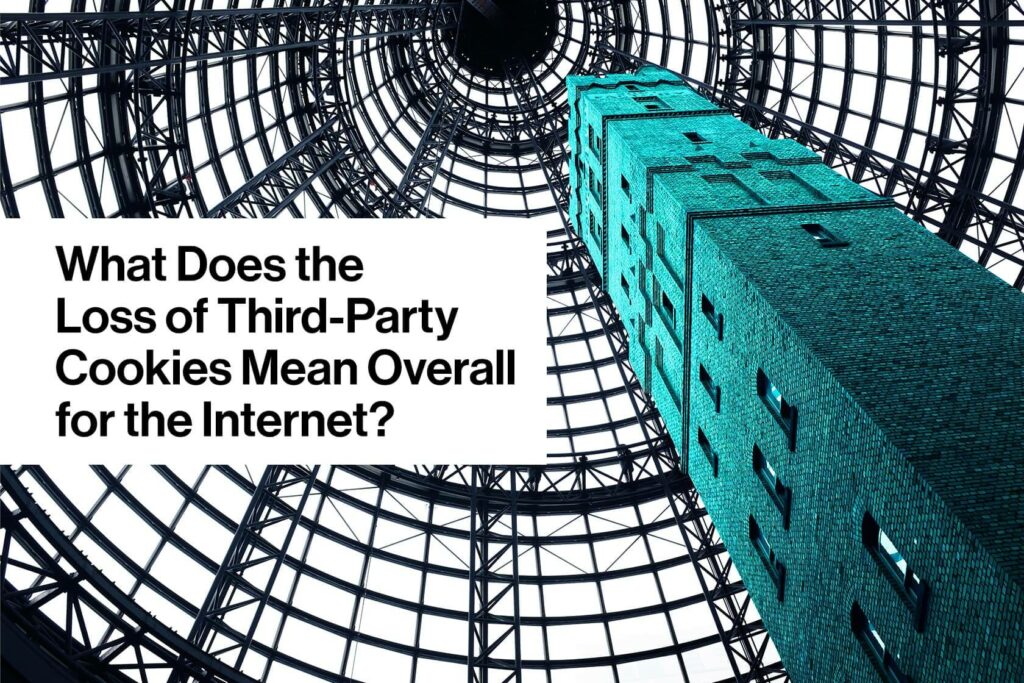Third-party cookies are a driving force behind many aspects of programmatic and digital advertising. Since Google announced that they will be removing all third-party cookies from Chrome at some point in 2022, many marketers are beginning to panic. Just how big of a deal is this, and what can marketers do to prepare for the inevitable?
Whether you’re an expert in this space or just learning about cookie deprecation, don’t panic. The one thing to keep in mind is that the loss of third-party cookies is going to force everyone to become more adaptable. Marketers are going to need to lean in and adopt new methods and test new strategies before we figure out the impact of cookie deprecation.
Currently, there are no proven solutions for the loss of third-party cookies for the open marketplace, but the removal of third-party cookies represents a new opportunity for better advertising, and more privacy for consumers. The change offers a chance for consumers to better secure their privacy, and it’s on us as an industry to adapt.
The First-Party Cookie

Third-Party Cookies
Third party cookies, on the other hand, are created and set by (you guessed it) third parties, which is someone other than the website owner. Third-party cookies have become ubiquitous on the internet for tracking, retargeting and ad serving. An example of a third-party cookie could be an AdForm cookie, which you might use as your ad server. When we talk about cookie deprecation, we are really only talking about the deletion of third party cookies. First-party cookies are not being affected by these now policy changes.
How are Third-Party Cookies Used Today?
1) Personalization
Personalized ads depend on third-party cookies. In other words, personalization relies on audience data to recognize consumers and serve each user the ideal experience. For example, you might want to show a family an SUV ad, while a bachelor might see an ad for a sports car.
2) Audience Targeting
Audience targeting allows you to reach a specific audience with a particular message. Each audience can be transformed into a list of third-party cookies, which then can be used to identify the users you want to reach on the open web.
3) Tracking and Measurement
Finally, third-party cookies enable us to track and measure our ads. Determining the impact of serving an ad to an individual is powered by third party cookies that show who clicked on an ad or made a purchase. This determines the economics of the value chain.
The Problems With Cookies

Cookies are Not Transparent: Let’s be honest: cookies are not exactly transparent, so consumers have little insight and control over how and what data is being shared about them.
Cookies are Not People-Based: Cookies actually represent devices such as a PC, laptop or a cell phone. They do not represent a person, and this causes a lot of duplication and wasted ad impressions.
Cookies are Not Persistent: Third-party cookies are also not persistent. They’re not long lasting and they’re always subject to deletion by the actual browser or the individual user.
Cookies are Not Common: Third-party cookies are also not common. For certain popular marketing channels such as in-app or connected TV, third-party cookies are not even supported.Cookies only exist in a web environment, and because they’re not supported on other great marketing channels, you can’t use cross channel tracking with third-party cookies.
The Shift Towards User Privacy

Digital privacy is becoming more important every day. There are two main driving factors for this shift towards user privacy: consumer preference and the governmental policies and companies leading this change.
The sad truth is that consumers do not actually want personalized ads. In fact, Nielsen did a recent study where they found 57% of US consumers said they would shrink ad personalization in favor of protecting their online data. The study also revealed that only 39% of global consumers felt they were informed by the way marketers acquired and used their data. And 63% said that brands were the biggest benefactors of their data and not the consumers themselves.
All of this explains the current shift towards consumer privacy, and the rise of ad blocking by consumers who do not want their data being shared. Today, over 27% of all internet users use some form of internet blocking, which is a big problem for marketers.
How Will the Removal of Third-Party Cookies Affect Advertising?

Behavioral targeting: Behavioral targeting includes things like brand affinity and in-market status. All of these types of behavioral targeting will be going away with the removal of the third party cookie.
Retargeting: Retargeting, by which users are followed around their browsing by a single ad campaign, will be diminished with the loss of third-party cookies. This not only limits campaign effectiveness, but also affects publishers who want to redirect traffic back to their site.
Frequency Capping: Frequency capping limits the number of times an ad is shown to the same user in a given time period, which is important for media efficiency.
Audience extension: Audience Extension refers to the process of showing an ad to a publisher’s audience across different websites, beyond the publisher’s own site. This is similar to lookalike targeting, where you find a specific group of audiences on your website, and you want to find similar groups to them across the Internet. This won’t be possible without third-party cookies.
View-through attribution: View-through attribution gives marketers the full story of their media marketing mix – what’s truly working and where they should invest their dollars based on performance. View-through attribution will no longer be possible after the depreciation of the cookie.
What does the loss of third-party cookies mean overall for the internet?

Publishers Will Need New Monetization: The loss of third-party cookies means there will be fewer personalized ads. But fewer targeted ads will have a real implication for publishers. If publishers can’t monetize users based on their behavior, they’re going to have to find other ways to monetize their traffic.
Rise of Paywalls: In order to make up for lost ad revenue, publishers will have to increasingly rely on paywalls. Rather than accessing content for free, readers are now going to have to pay a subscription, which limits accessibility for customers who can’t or won’t pay.
Growth of Walled Gardens: Facebook and Google already have their own first-party cookies and logged-in user data. Other retailers, publishers or online streaming services such as Netflix and Twitch can be grouped into this category of walled gardens, because they all have their own first party data from logged in users.
Ready to get started with planning your campaigns for a post-cookie future?
Contact us to connect with one of our campaign strategists who will provide you with strategic insights to help you create your next results-driven campaign.
Get the Guide: 5 Steps to Prepare for the Loss of Third-Party Cookies
In preparation for what’s to come, we’ve created a guide with 5 ways to plan your programmatic advertising strategy without the use of third-party cookies.
Fill out the form below to download the guide.

